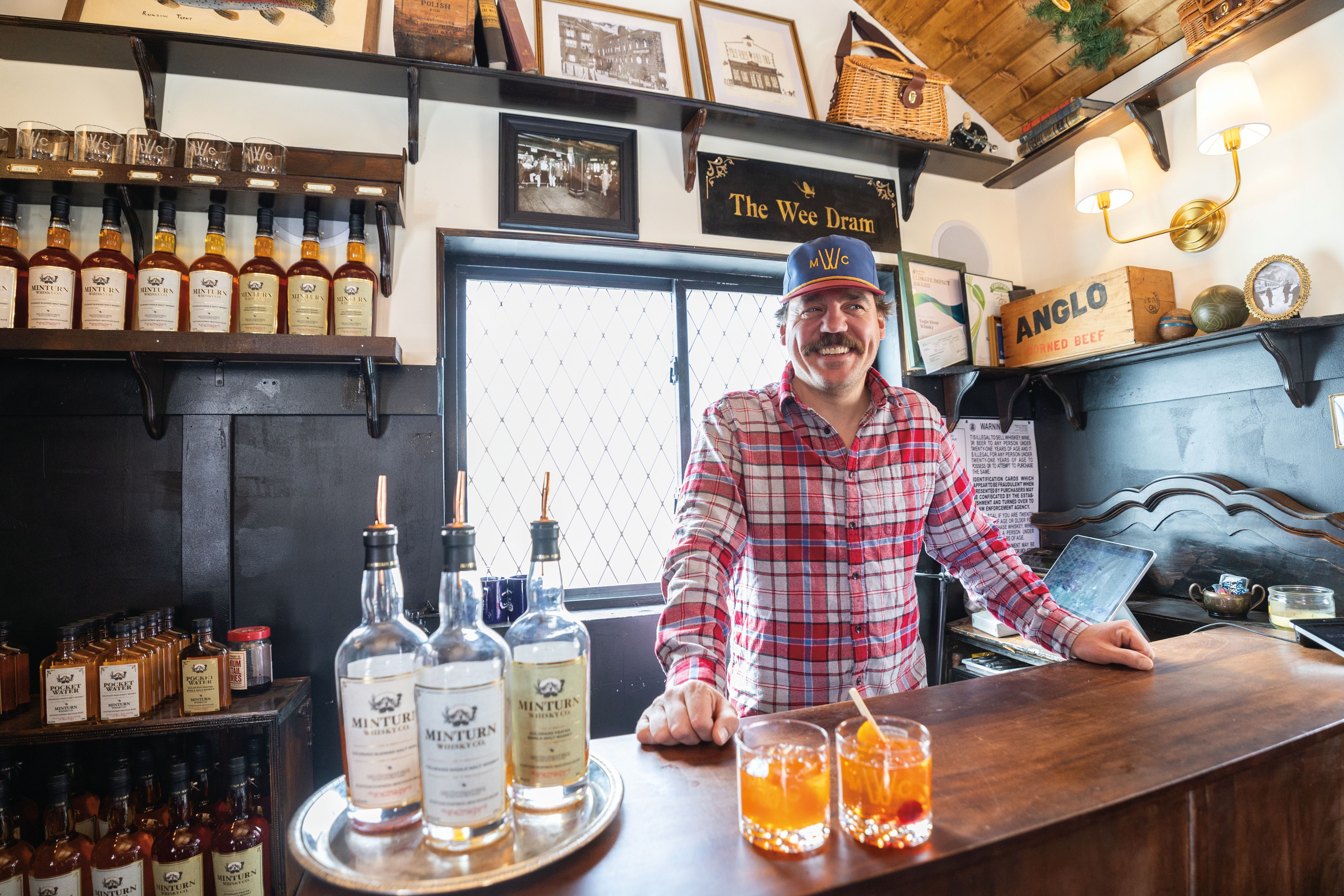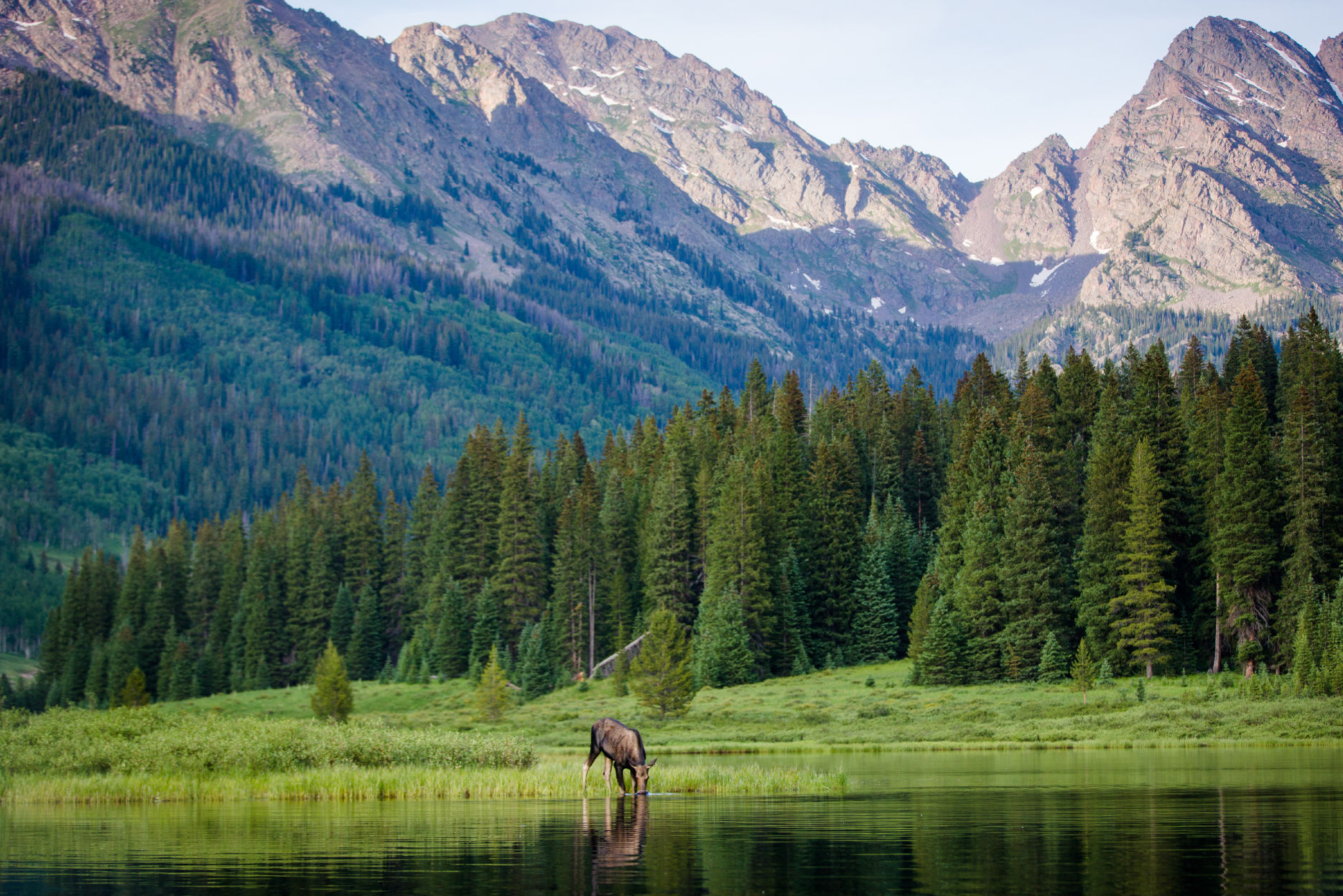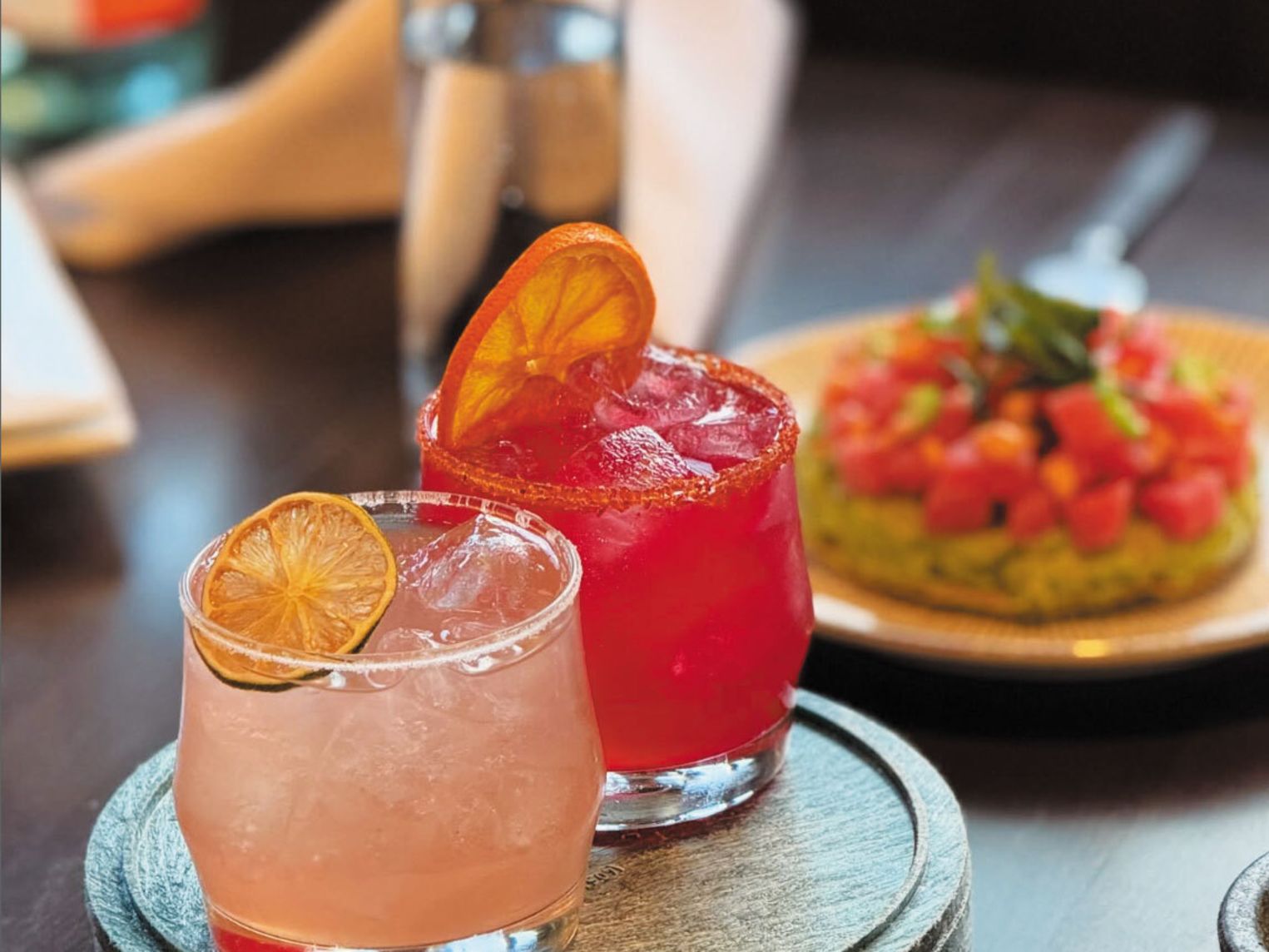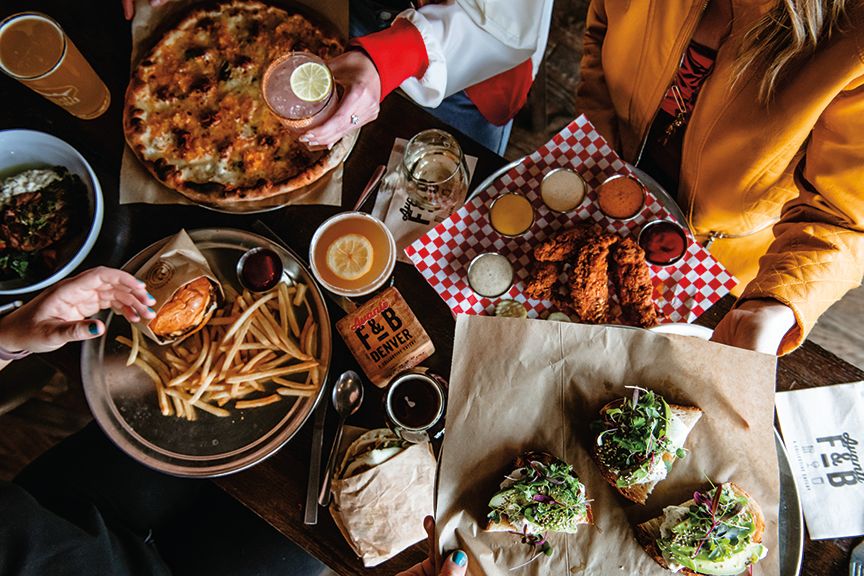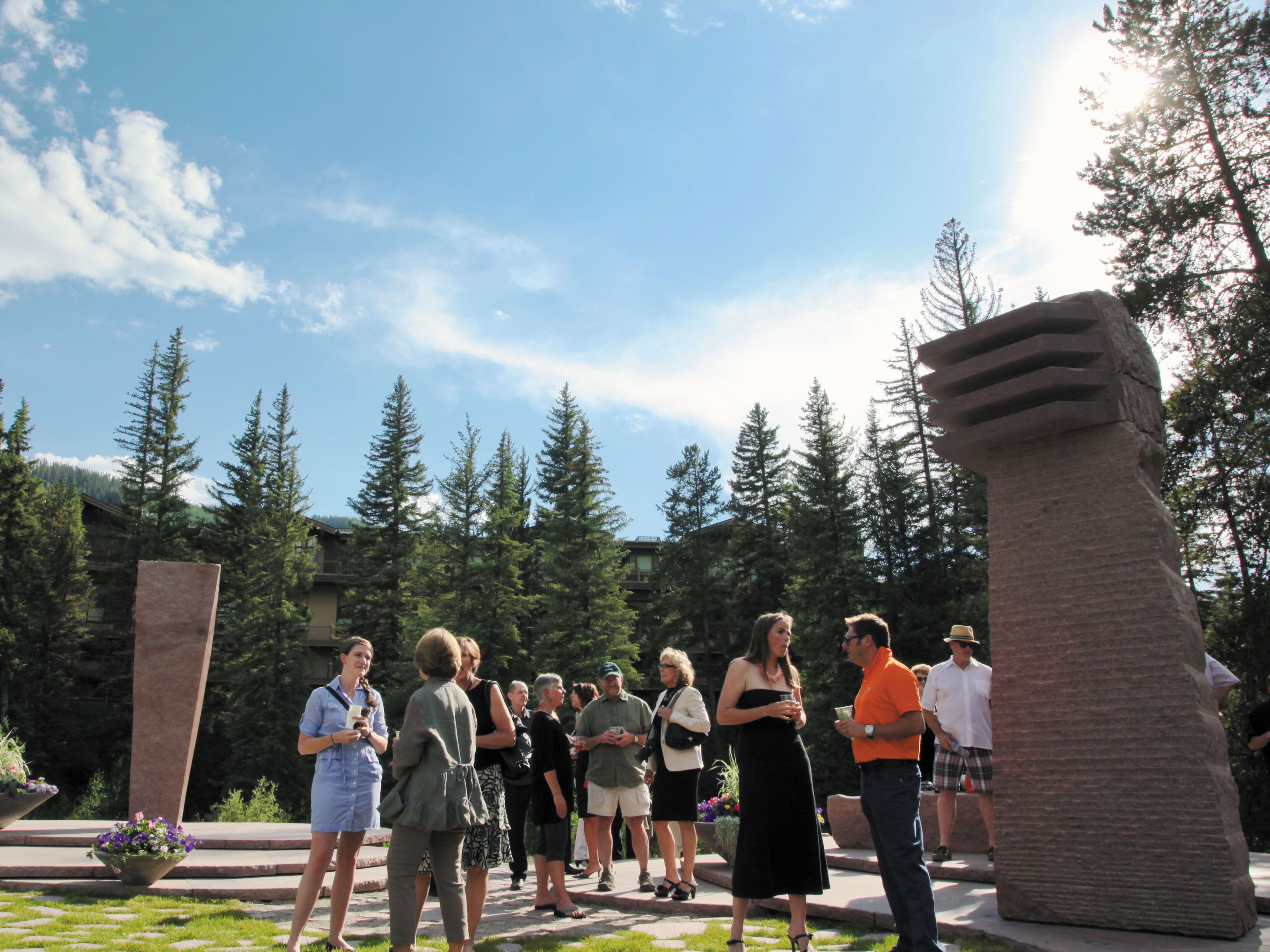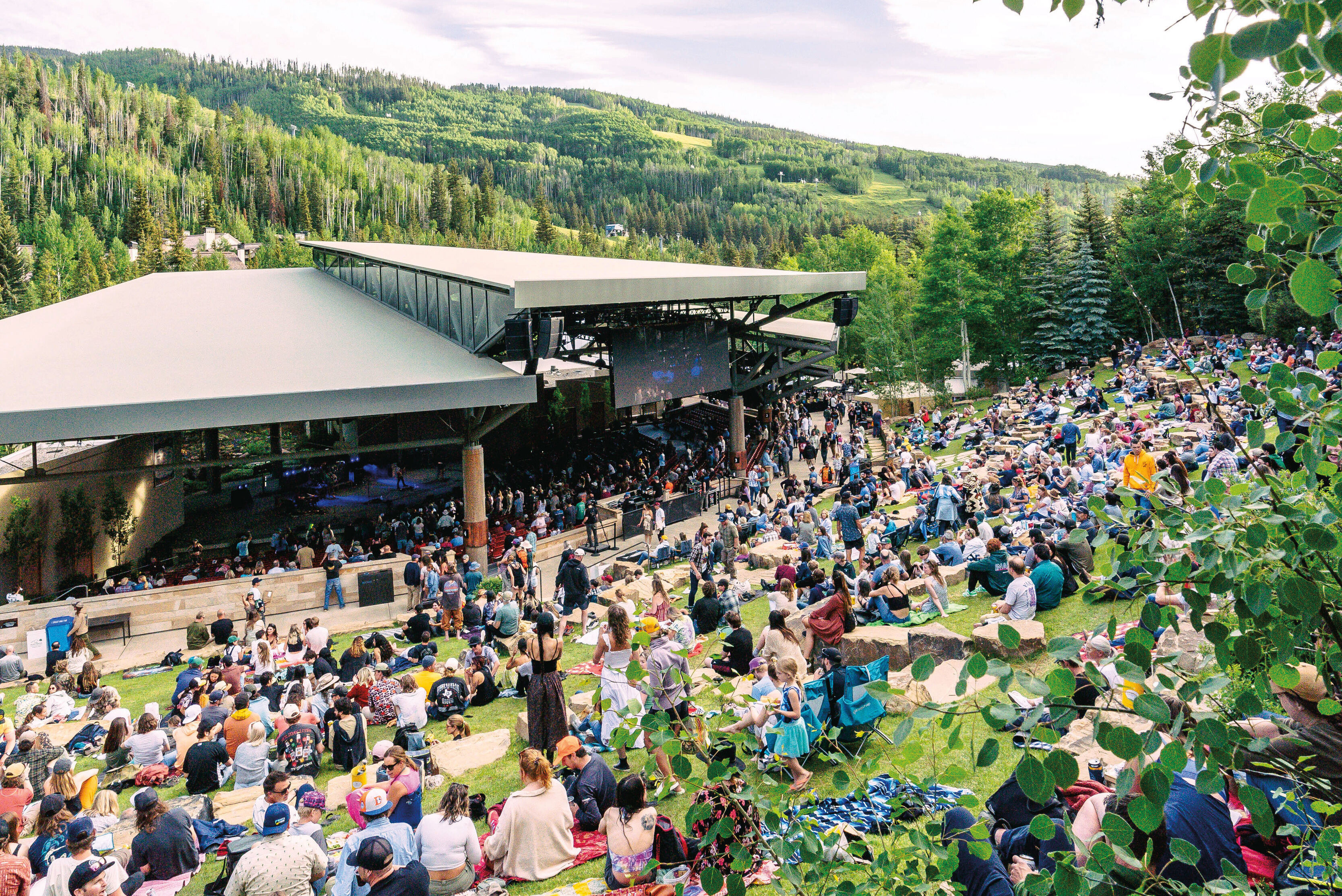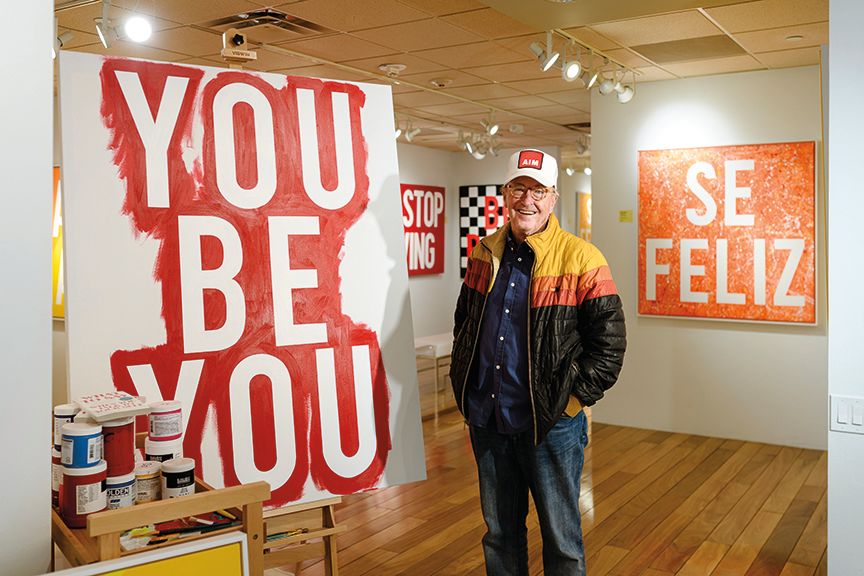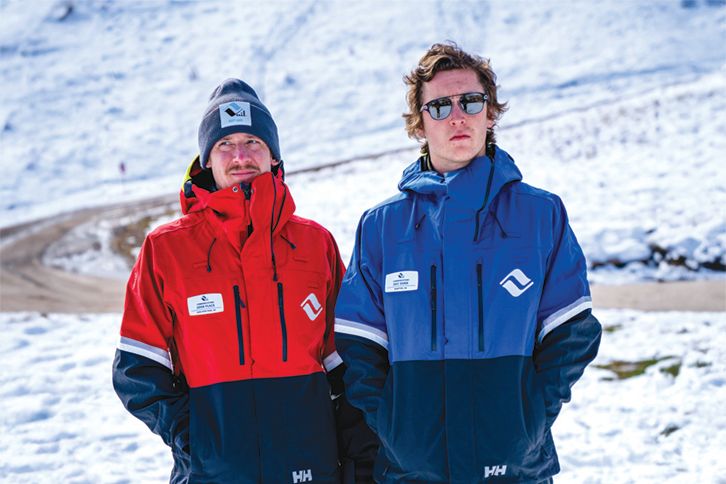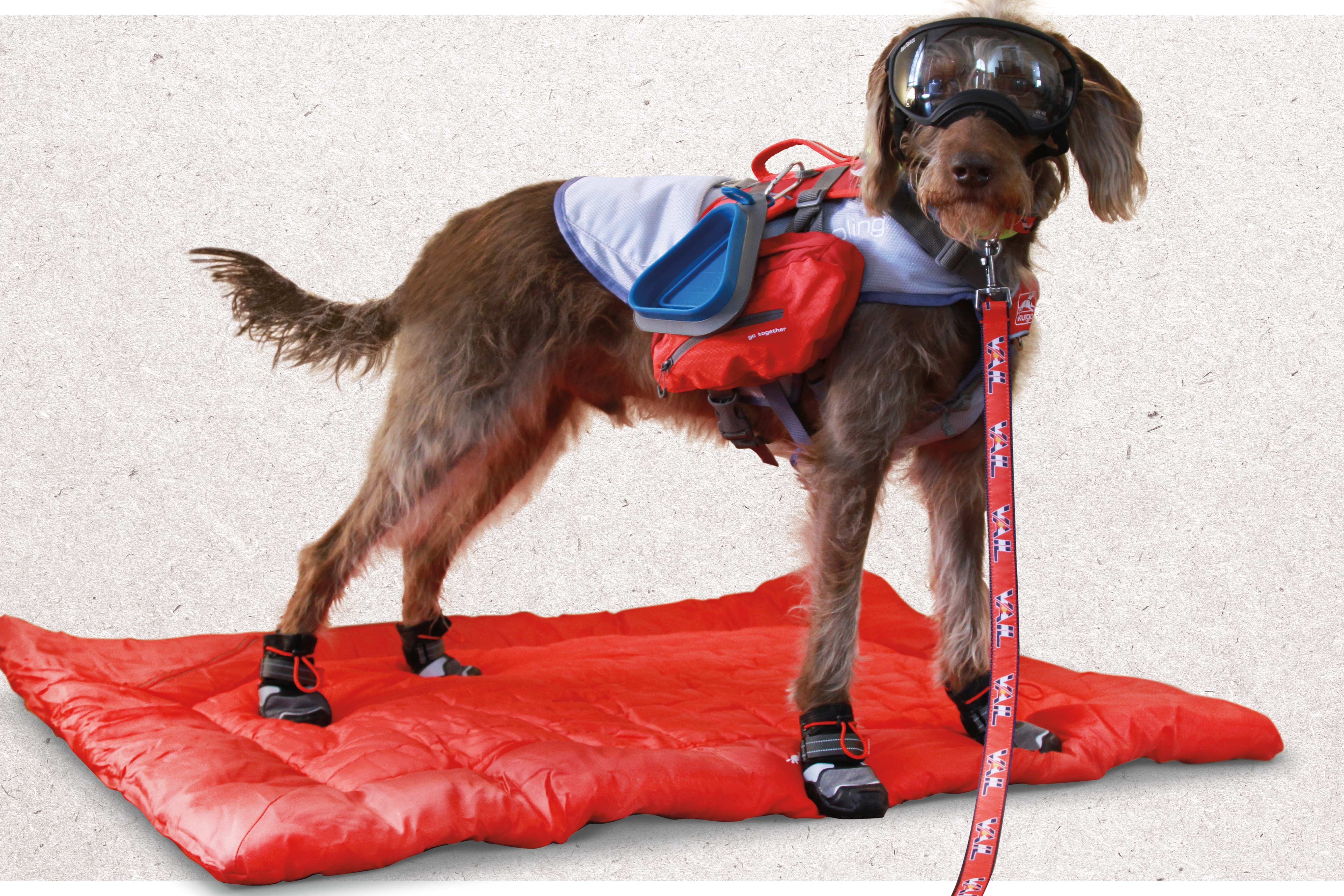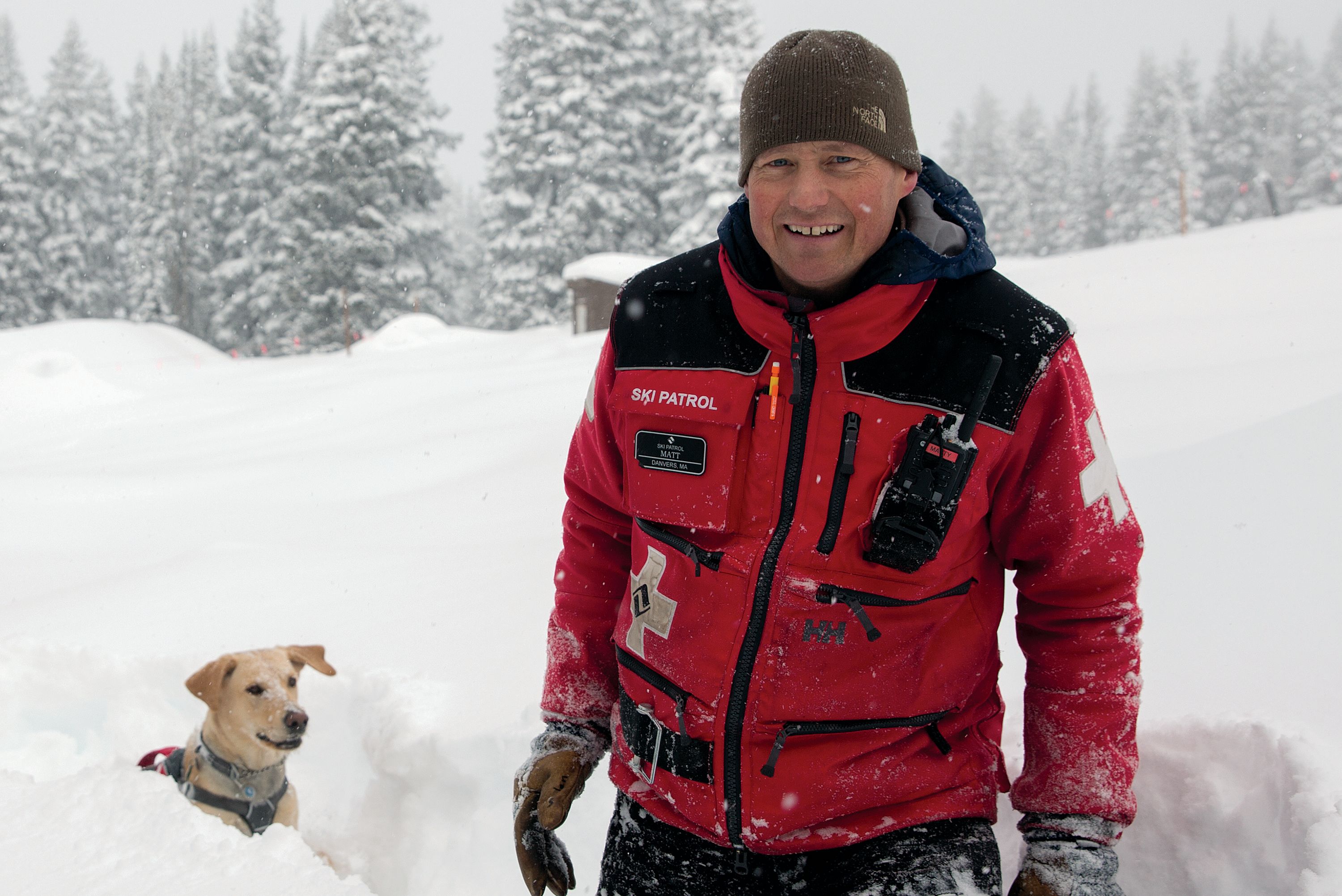
The Best Jobs in Vail
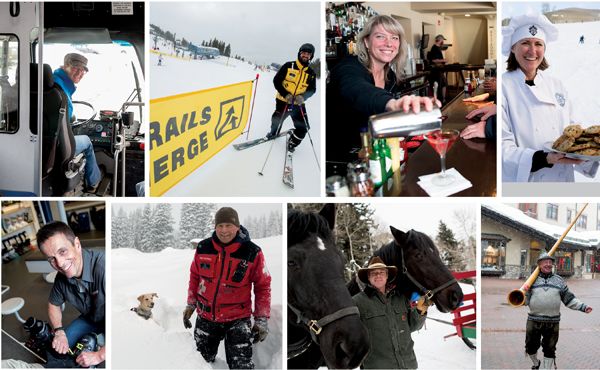
Living in the Vail Valley requires hard work—literally. To vacationers time here may pass in a blur of powder days and party nights, but there’s a reason the community never slows to a stop when the snow piles up to your navel on New Year’s Eve. Behind the scenes in Vail and Beaver Creek, thousands of locals turn the gears (that turn the chairs) every day and night to keep paradise in business—and simultaneously create a life in the mountains for themselves. Here, eight worker bees talk about what they do and how they came to do it in the Vail Valley.
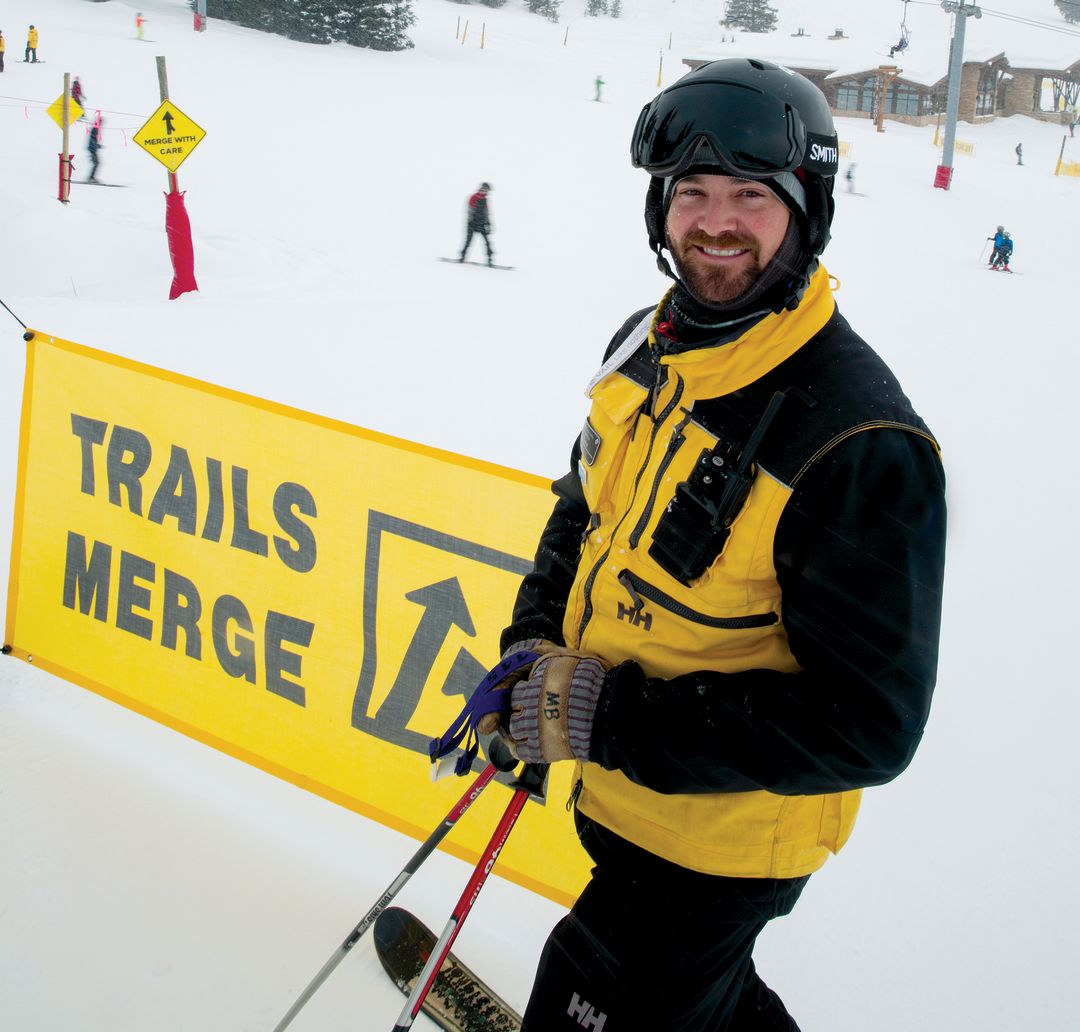
Image: Dominique Taylor
NAME: MARSHALL BURROW
GIG: Mountain safety supervisor, Vail Mountain
HOMETOWN: Boulder
YEARS LIVED IN THE VALLEY: 10
I was only going to do a season, as everyone says. But one year turned into 10.
How I got this job is a funny story. I was at a café in Lionshead and sat next to two patrollers. Turns out one of the patrollers used to date my brother, and she told me about mountain safety, so I applied and got the job. It’s a good gig. We ski and snowboard around the mountain and try to educate guests and enforce the Ski Safety Act. We concentrate on the high-traffic areas, mostly in the slow zones, and try to slow people down. In the busy season on Fridays and Saturdays, we try to have about 25 mountain safety workers on the hill.
We ski around and post up in different places for 10 or 15 minutes, and we just rotate through our areas. Our office is huge. We’re flagging people down and having conversations with them. Every case is different, but we’re looking for people going faster than the flow of traffic. Because we’re stationed throughout the run, if I’m above another mountain safety person, I can radio down a description of someone we need to stop. So if we were on Born Free, I would say, “Hey, Dogleg”—which is lower-lower Born Free—“gray jacket, black pants, skier, going too fast.” Or “out of control.” Or “near collision.”
Then we wave them down, call them over to us. We introduce ourselves, tell them why we’re stopping them, and it can be either an educational warning or a written warning. For a really bad one, we can suspend their pass, but those are rare.
Because I’m a supervisor, I get a parking spot at the base of Gondola One and a locker. That’s one of the reasons I keep coming back.
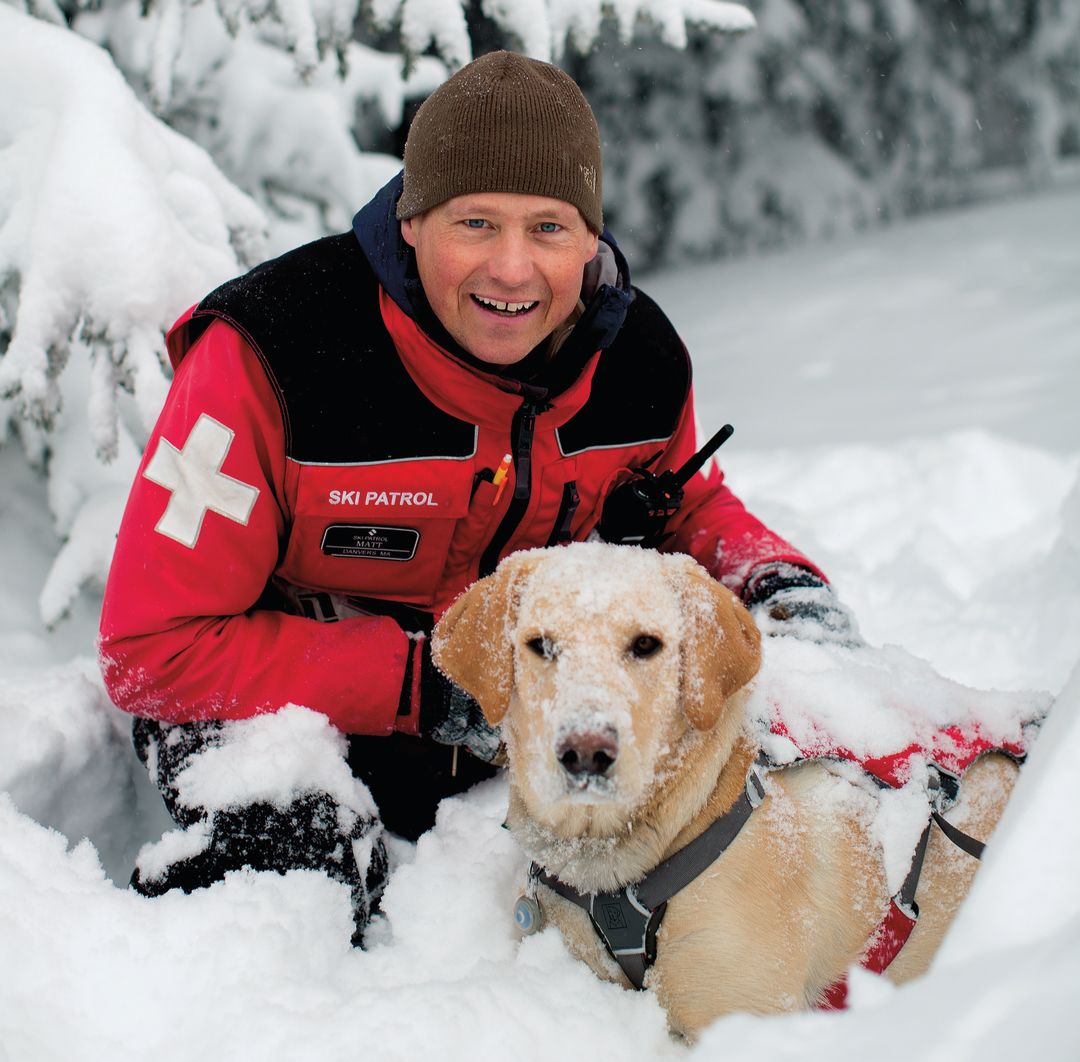
Image: Dominique Taylor
NAME: MATT WHALEN
GIG: Vail Ski Patrol supervisor, avalanche dog handler
HOMETOWN: Danvers, MA
YEARS LIVED IN THE VALLEY: 21
This is my eighteenth year as a ski patroller. I’m up here five days a week, and on my days off I’ll either come up skiing or go for a skin somewhere. I’ve been an avalanche tech, an avalanche forecaster, and now I’m an avalanche rescue dog handler.
My yellow lab puppy, Jake, is a year old. We’re both in training still; I’m probably learning just as much as he is—mainly how to read his mannerisms, from when he picks up a scent and smells someone under the snow to when he starts alerting and digging. He’s actually the brother of one of our other avalanche dogs, Mookie. Mookie has a good drive and is a good searcher and loves to work. They came from a breeder in South Dakota who breeds hunting dogs and other service dogs. This morning we put some high school kids in snow caves and had Jake find them, and he did pretty well. He’s on the right track.
But because he’s still only a puppy, he needs to rest sometimes. He works five days a week like I do. I try not to run him too hard. Some days he’ll go down the mountain on a snowcat or a snowmobile; other days I’ll run him down the trail with me.
Ski patrolling can be a little misunderstood. Sometimes people think we leave terrain closed to keep it for us, because it’s great skiing, and we’re making laps in fresh powder. But being a patroller, even though you get your powder runs in, you actually ski some of the worst conditions anywhere, to see if it’s ready for the public. If it’s not, we wait until it’s ready, then we open it to the public.
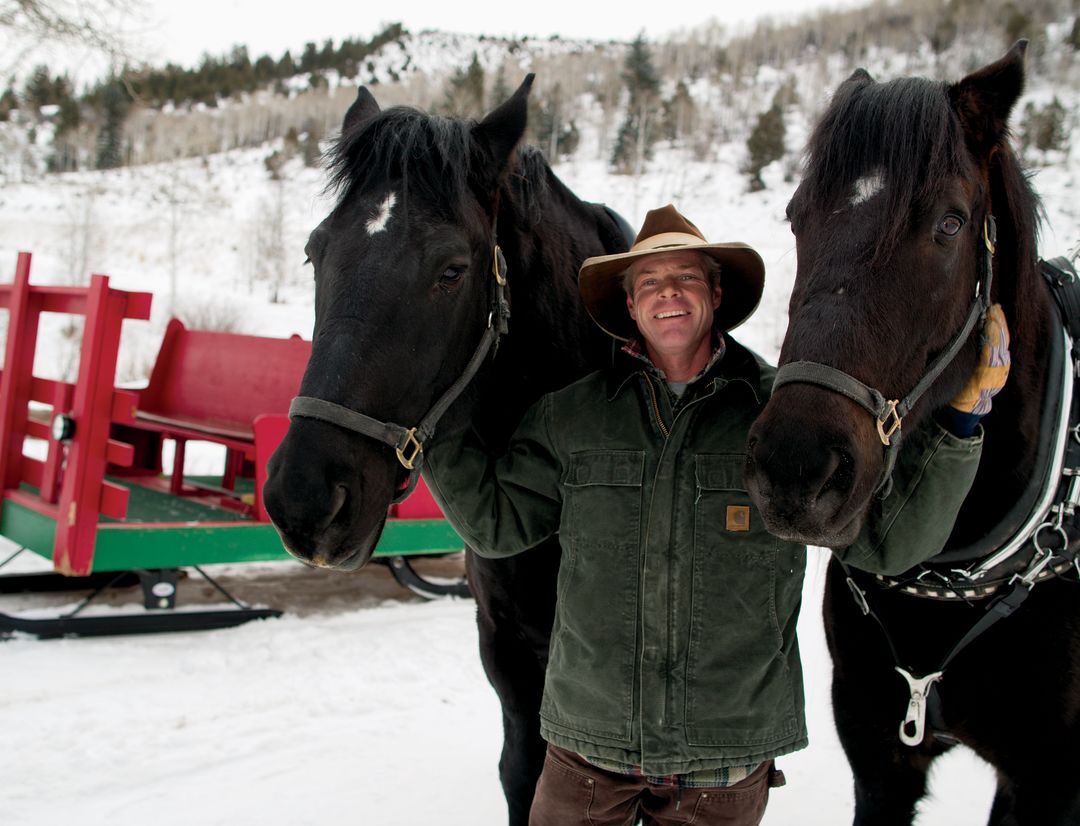
Image: Dominique Taylor
NAME: Gavin Selway
GIG: Co-owner, sleigh driver at Bearcat Stables, Edwards
HOMETOWN: West Yorkshire, England
YEARS LIVED IN THE VALLEY: 24
When you’re a sleigh driver, you’re called a teamster—you work with a team of horses—versus a wrangler, who works with riding horses. I was trained 16 years ago by an 80-year-old man who’d been driving a sleigh most of his life.
We do sleigh rides and hot cocoa during the day, and then we have our dinner sleigh rides. The horses will do anywhere from four to six runs a day. We use Percherons, a French breed of draft horse that is one of the strongest pulling breeds in the world. They way outpull the Clydesdale. I have seven of them, solid black, each about 2,000 pounds. When the sleigh is fully loaded with 16 people, two horses could be pulling up to 5,000 pounds.
We give guests about a 25-minute ride. We groom our own track down the valley running along Squaw Creek. We tell them about the Bearden Ranch and when they homesteaded. The sleigh sits on skis. We make some tight turns and go over a bridge. We mostly use voice commands. The horses work off of us talking to them and get familiar with our voice. If I want the horse to go to the right, I say, “Gee.” To the left, “Haw.” If I want them to go faster, I elevate my voice and say, “Step up.” I talk to them by their names. So we have a team of Frank and Jesse—the James Brothers—and I’ll say, “Frank, Jesse, step up.”
You won’t find many owners still doing the daily work, but I still ride the horses, I pack in my hunters doing hunt camps, I take guests on the four-day trip to Aspen. I like being outside and being with the horses.

Image: Dominique Taylor
NAME: Dawn Nichols
GIG: Bartender at Vendetta’s, Vail Village
HOMETOWN: Blue Point, NY
YEARS LIVED IN THE VALLEY: 19
As a bartender, you’re kind of an ambassador for Vail. You’re the conduit to what’s happening. You are the source of information.
People like to talk, especially when you add alcohol. But it makes you a good listener and helps you problem-solve and keep humor in it. Usually I’m running around like a chicken without a head, but when I have time to sit there and have a conversation, I can talk to people from all over the world—doctors to construction workers. This job has taught me never to judge a book by its cover.
I got here at 9:30 this morning and started setting up the bar, restocking all of our liquor, wine, and beer, and cutting fruit. Then we open at 11, and my bar fills up with a lunch crowd and some who need a little liquid courage before getting on the hill. I serve cocktails all day long. It’s a very physical job; I’m like a ping-pong ball behind the bar. Also, having been a gymnast through college, I am known as the chick who does splits on the bar in Vail.
I moved here right after I finished graduate school in Arizona. I got a master’s in American history. Now I’m enrolled in a graduate program in clinical mental health counseling. Bartenders here are overeducated for what they do. But they love to be around people, and they love the lifestyle.
The day shift goes from 9:30 to 8, and the night shift goes from 8 to 3:30 in the morning. Sometimes you have people yelling at you, but I have a mantra that I always say: “You can only go as fast as you can go.” I go pretty fast, but I’m not superhuman. I’d say 95 percent of the time, we have happy customers.
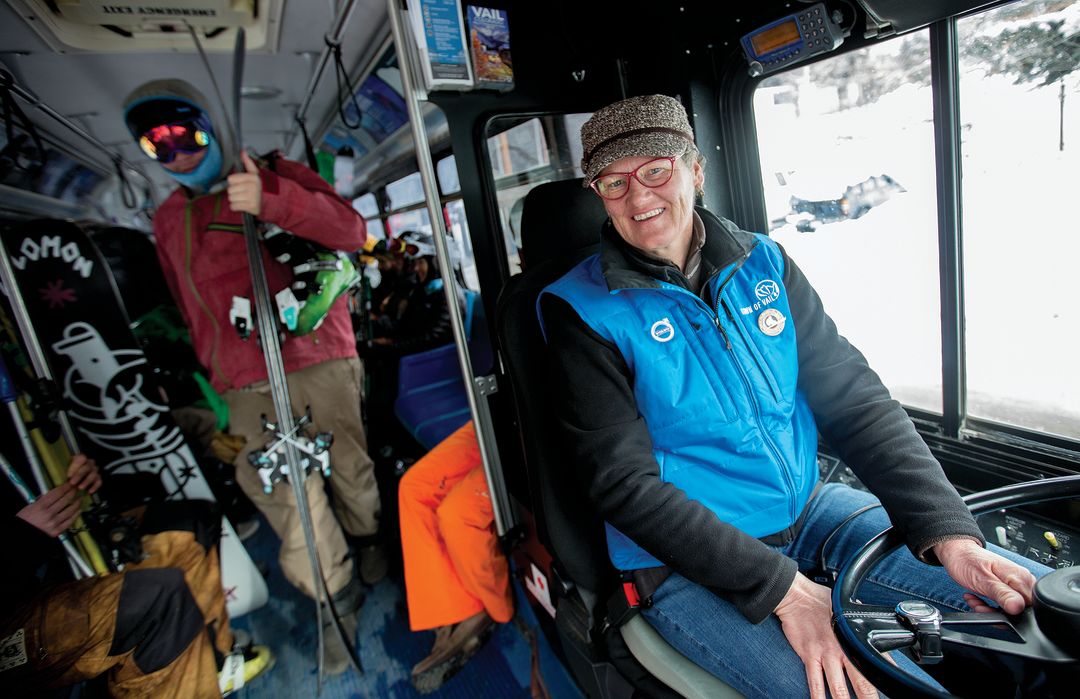
Image: Dominique Taylor
NAME: Sherry Bunch
GIG: Bus driver, Town of Vail
HOMETOWN: Dayton, OH
YEARS LIVED IN THE VALLEY: 20
I spend eight hours a day driving, but I only go 105 miles. That’s nine West Vail loops.
Before I started driving the bus 18 years ago, I was a massage therapist. But I had to save so much physical energy for my clients that I wasn’t able to ski and bike and live the life I came here to live. Driving the bus let me burn myself up physically at all my outdoor sports—I ski 60 days a season and currently am on a Nordic classic/skate tear—so it was a good match.
I also served four years active duty in the U.S. Navy and two years in reserve. If you’re familiar with the book The Hunt for Red October, that’s pretty much the job I had. I analyzed data from sonar ocean arrays laid on the bottom of the sea in strategic parts of the world where the U.S. had interests, to find out what kind of surface and subsurface vessels from other countries were out there. I did most of that in the Aleutian Islands off the coast of Alaska.
I’m very happy driving the bus. I’ve had no other job in my life for this long. It’s very mentally demanding and takes a lot of energy to drive a 40,000-pound vehicle and answer questions all day. Some people want to be dropped off at the driveway of their house on the bus route because they “know the transit manager” or they’ve “lived here 35 years.” I’m sorry, but the way a fixed-route bus works is we have designated bus stops. If you want to ride the bus, you have to get on and off at those spots.
My job is very tedious, but if I ever start to get burned out I leave town. I go to Moab or wherever and put myself in the shoes of tourists who need some information or need to get somewhere. I say, “Wow, how much better was my trip because people were nice to me?” That can refresh me for a while back in Vail. Tourists are just here to have a good time.
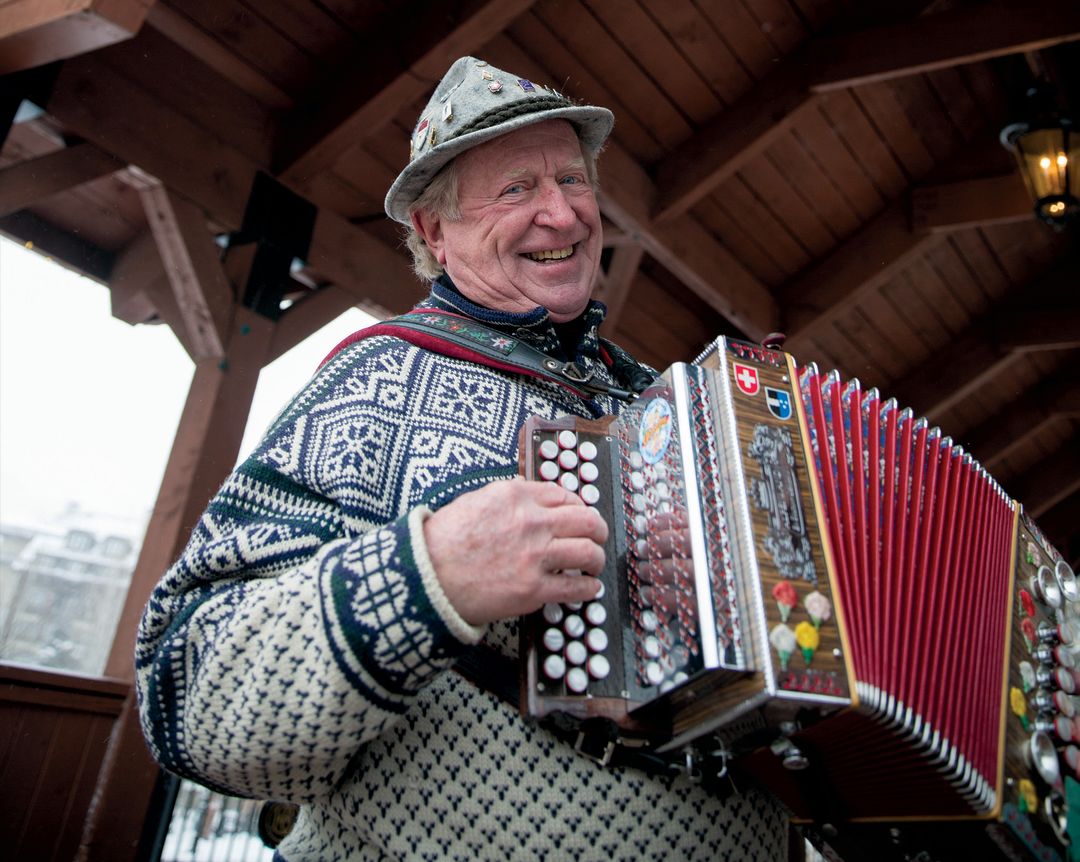
Image: Dominique Taylor
NAME: Helmut Fricker
GIG: Entertainer
HOMETOWN: Karlsruhe, Germany
YEARS LIVED IN THE VALLEY: 44
My father had to go to the war. He fought for six years, then he spent five years in a labor camp in Siberia after the war, so he was a prisoner for most of my childhood.
I was six years old when we got bombed out of our home in 1942. I remember it like it was yesterday. We were trapped in the basement under the rubble for 50 hours. It was me, my mom, my brother, my two sisters, and another family. We overheard some people with shovels and picks, searching, so we started knocking on the wall, and they heard us and rescued us. We lost everything.
In 1969, my wife and I and our two kids, then nine and six years old, immigrated to the U.S. and ended up in Fort Sill, Oklahoma, at the Army base. A month later, we took a trip to Colorado, and when I saw Colorado, I said, “I’ll never leave here.” I still haven’t left.
I’m an entertainer; I’m there to create an atmosphere. I’ve played at many restaurants in Vail and in all 50 states around America, often for big companies that send me around. I’ve been performing at Beaver Creek Resort for 35 years. When they opened the lift for the first time at eight o’clock on the 15th of December, 1980, when President Ford was cutting the ribbon to open the ski resort, I was playing right there.
I work in the plaza, outside, in the cold and snow. I play my accordion or my alpenhorn, and the people ask me to take pictures with them because of my lederhosen or the hat I’m wearing. If they want to sing along, I say, “Come sing along!” Sometimes whole families join me. I don’t work for tips, but once in a while someone gives me something.
Am I famous? Well, people tell me that. I don’t want to brag, but yes, I am.
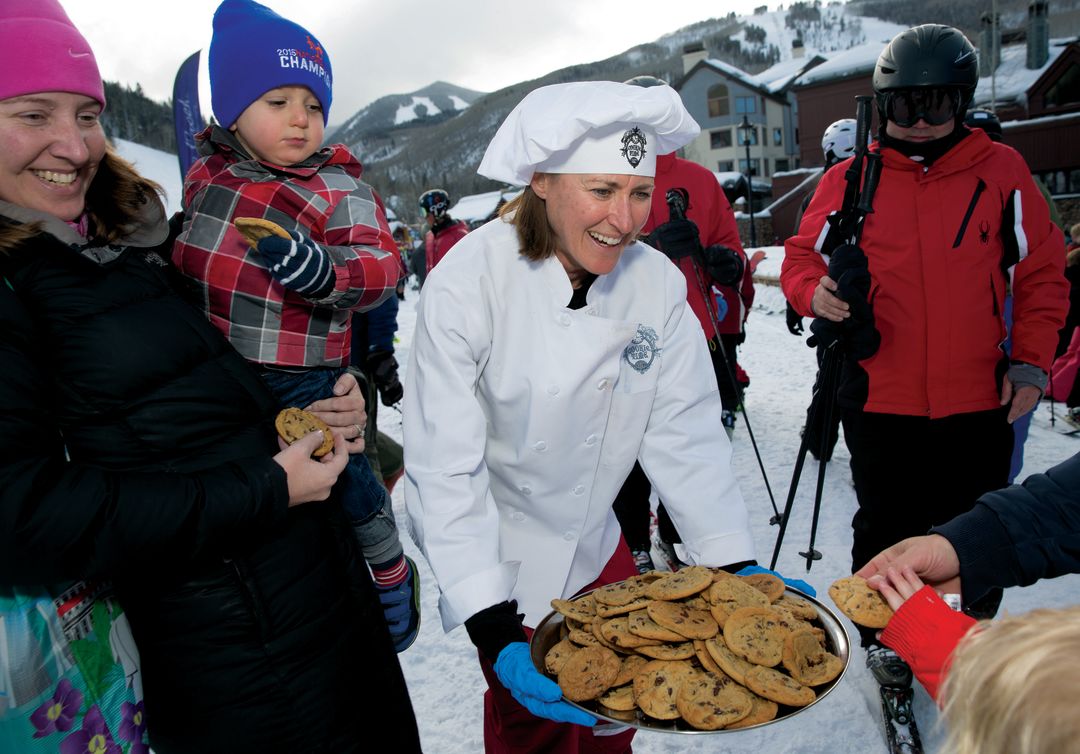
Image: Dominique Taylor
NAME: Linda Bennett
GIG: Cookie Time volunteer, Beaver Creek
HOMETOWN: Kansas City, KS
YEARS LIVED IN THE VALLEY: 1.5
Basically, we hand out cookies, and everybody loves ’em. We have our white chef’s coat and white chef’s hat on, and we carry around our silver trays of cookies. We kind of wander. As skiers are coming off the mountain, they’ll come right up and grab a cookie.
I get people all the time telling me, “You’re great! This is the best part of my day!” One tray—about 50 cookies—goes quick. Today it took five minutes. We’ll have people who will grab four or five cookies at a time, “for my brother and my niece and my friend over here and my mom and dad.” They’re warm and they’re soft, and some people look like they just really need that cookie.
Kids love ’em, too. Sometimes their parents will say no, but what’s funny with the little kids is they’ll hold, like, half a cookie behind their back and they’ve got chocolate all down their face, and they’ll say, “Can I have a cookie?” like they haven’t had one yet. “Sure!”
I almost never get people who don’t like cookies. More likely what I get is, “Oh, I can’t have that. I’m gluten free.” Or, “I’m watching my figure.” I actually don’t eat them, either. I’ve had them, and the cookies are great, but I don’t need to be eating them.
I wish I would’ve moved out here sooner. I used to be an accountant in Kansas City. Living here is good for your soul.
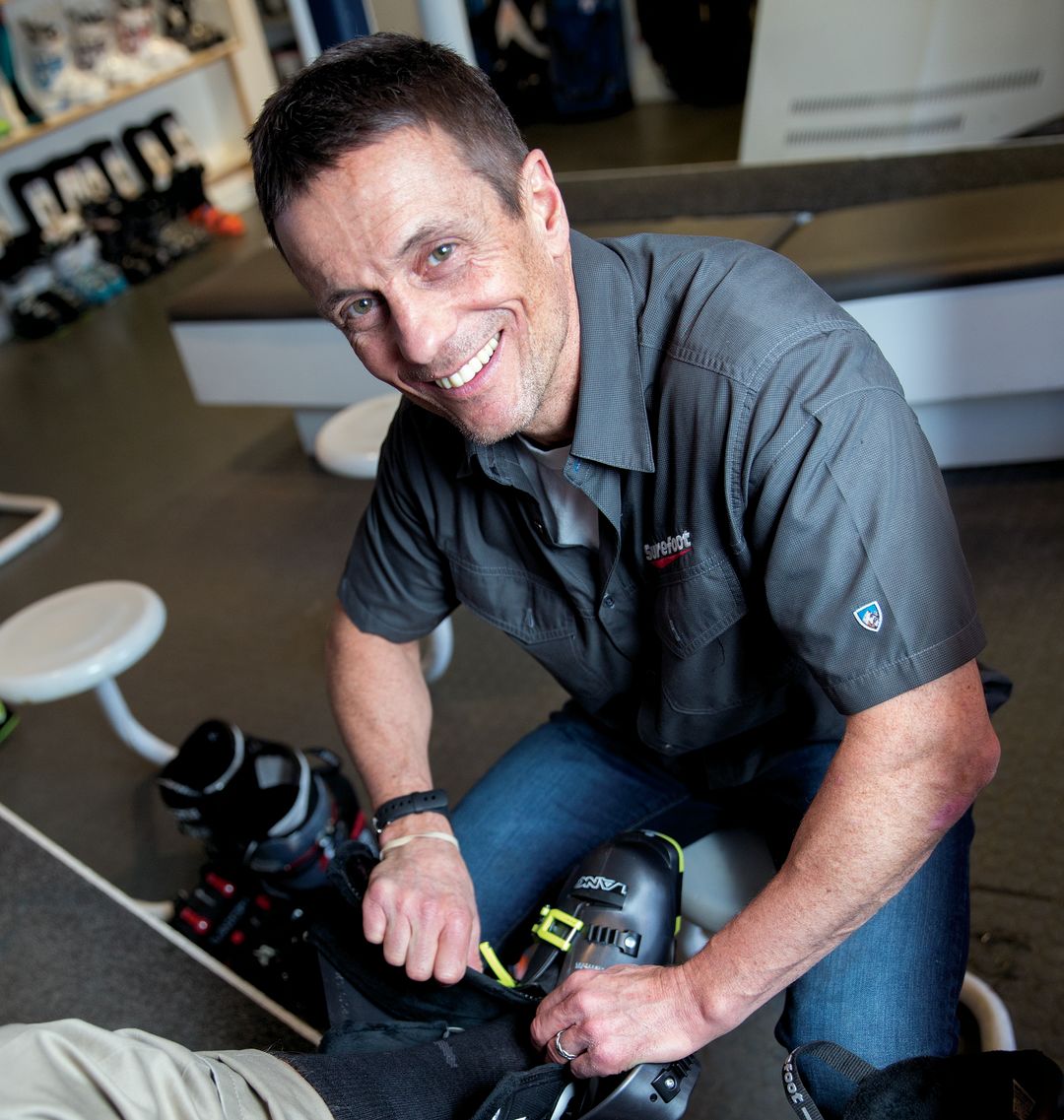
Image: Dominique Taylor
NAME: Russ Shay
GIG: Cofounder/boot fitter at Surefoot, Vail Village
HOMETOWN: Windsor, CT
YEARS LIVED IN THE VALLEY: 28
My older brother Bob and I grew up ski racing in Vermont; Bob went out to Wyoming and Utah for college, and we started our business in Park City, Utah, in November of 1982, in the corner of one little store. The Vail store was our second store in ’88 and has always been our busiest.
We now have 23 Surefoot stores—five in Europe, one in Canada, and 17 in the States—as well as nine running stores in New York and five in L.A. The key to longevity and success is customer service and being passionate about it. I’ve loved to ski ever since I started, and I’ve surrounded myself with good people who have the same passion for skiing as we do and want to live in the mountains.
Ski-boot fitting is nothing like what it was 30 years ago. People used to put up with boots that didn’t fit. But as the products have evolved and boot manufacturers started listening to their customers, it made the boots easier to get on and off and more comfortable. The materials are better—not susceptible to cold and in general just more anatomically shaped.
I like to think everyone in here can do the job as well as I can. It’s not rocket science. First off, it’s important to greet the customer and be nice to them, and show your enthusiasm for the sport. For 75 or 80 percent of our customers now, we just do custom liners. So we pretty much take all of the guesswork out of it. We basically bring the factory to them. If you want everything, it’s expensive. Ski boots now are $800 for top-of-the-line boots, then add a custom liner at $425, an orthotic is $235, and heaters can be anywhere from $250 to $450.
I don’t think this place has changed all that much since I got here. It seems the same to me. Vail is Vail.







